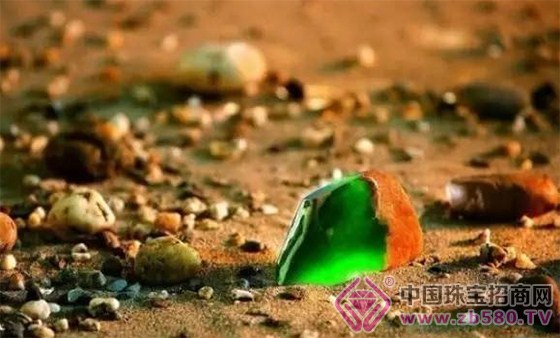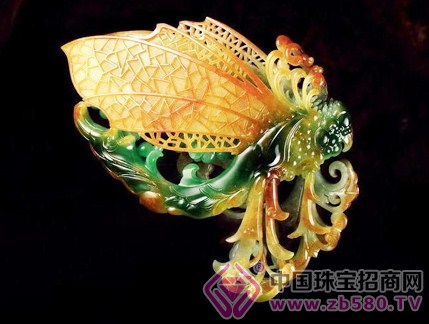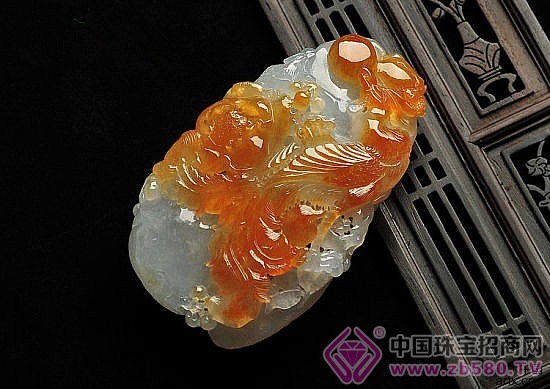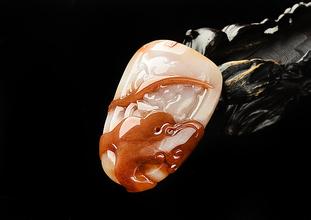When Jade discovered when and when it was among the ranks of Chinese jade, although there was a general saying that was recognized by most people, there were different voices. The prevailing saying is that the emeralds were introduced to China from Burma in the early Qing Dynasty, and because the rulers of the Qing court liked it, especially by the Empress Dowager Cixi, they became popular in China and became a rising star in Chinese jade. That is to say, the history of jade in China is not long, but it is only three hundred years, and the time when the real "fire" is widely sought after is shorter.

This argument is based on the fact that, from the archaeological excavations and the palace collections, it has not yet been discovered that there was jade in the Ming Dynasty. The most convincing fact is that in the Ming Dynasty, Jade did not have any documentary and physical evidence of entering the court. The Ming Tombs excavated the Dingling. In this mausoleum of the Ming Emperor, many embedding jade articles were unearthed, but there was no jade. Imagine that if Jadeite was popular at the time and widely recognized by the world, Wanli Emperor Zhu Xi, who likes jade, would not choose jade as a funerary.
However, some people disagreed with this statement and thought that Jade has already entered China. According to the name of "Jade", it appeared in the Han Dynasty. Jade is the name of the bird, but Ban Gu "Xidu Fu" has: "The jade fire is Qi, the flow is full of English, the hanging thorns are thorny, the night is shining." Zhang Heng's "Xijing Fu" also has: "Jadeite fire Qi, network With the beauty jade. Flowing the night light of Li, the ribbon is like a candle." The fire Qi, the hanging Li, and the beads mentioned in the two Fu are the names of ancient gemstones. The "Huainanzi recognition training" also puts "Rock horn, ivory, jade, pearl carp" side by side. It can be seen that the word "Jade" can be used for birds in ancient times and is also the name of gems. In the Southern and Northern Dynasties, the "Yutai New Poetry Preface" of the Liang Dynasty had "the glass enamel, all day long; the jade pen bed, leaving the hand from time to time." In the Song Dynasty, there were more eloquent records. Ouyang Xiu wrote a piece of jade that he had collected in "Returning to the Field".
Yu Jia has a jade, the shape is very ancient and exquisite, the beginning of it, Mei Sheng Yu thought Jasper. In Yingzhou, I tasted the genus, and there were soldiers and horses under the jurisdiction of Deng Baoji. The Zhenzong dynasty and the old minister also said: "This treasure is also called the emerald." The library, there is a jade in the library, so I know. Later, Yu Duo used the golden ring to grind it in the abdomen of the populace. The gold scraps fell one after another, such as smashing the ink in the sputum.
Both statements are based on the long-standing views of each other.

In addition to these two arguments, there is still a third statement, but only a small number of people are heard. Except for some experts and scholars who are extremely interested, others have not explored. This third statement pushes Jade's life to a more distant and awkward situation.
In the "Gem of the Gem", Zhang Hongyi recorded: "Luo Xuetang's possession of jade shank, Yunluyang unearthed, the pattern is the same as the valley, so it is broken into Zhou. (The third volume of the picture "Shiya") Ming can distinguish between right and wrong, Gu also can not be said that there will be no jade in Zhou." Luo Xuetang (1866-1940), the famous language philologist, Chinese oracle bone and the founder of Dunhuang studies Luo Zhenyu, the word Shu Yun, Zhejiang Shangyu . When Zhang Hongjun graduated from the Science Department of the Imperial University of Tokyo in 1911, he first "who was enshrined in the hands of Luo Shuyun, and after graduation, he was a lecturer in geology at the Agricultural University of Gyeonggi University. Mr. Gero was the president of the Agricultural University." (Zhang Hongjun's "Sixty-six Self-Reports") Luo Zhenyu is an archaeologist and a teacher of Zhang Hongjun. As the first president of the Chinese Geological Society and the originator of the natural history of the emerald, Zhang Hongyi did not see the real thing, probably not rumored. In addition, the picture will not be included in his "Shi Ya", and clearly marked "Zhoudai Jade", "Shang Luo Shi."
If Zhang Hongjun’s statement is established, the history of Jade’s discovery and application in China will be pushed forward to the Zhou Dynasty.
There is a more imaginative discussion of the history of jade in Gems. "Specially different, Japan and North Korea do not produce jade and jade, but the jade in the ancient jade is more than jade, and the acquaintance is constantly imported from China." Zhang Hongyi quoted Japanese archaeologist Hamada farming. Research report: "The ancient Japanese jade jade, not only in the ancient tombs, but also a lot of people from the Stone Age, and most of them are not jade, but also jade." Zhang Hongyi basically recognizes the views of Japanese scholars. That is, jade is imported directly from China via North Korea or from South China.
Zhang Hongyi's record of jade in "Gem Theory" has become a popular reference for later Jade scholars, which has led to a lot of discussion. Although most scholars have reservations about this, even the topic of whether or not to produce jade in ancient Japan, but it is a matter of opinion. It is difficult to conclude.
In the relevant literature on the history of jadeite, the record of earlier time, conclusive and reliable, is considered to be "Xu Xiake's Travel Notes".
In the spring of the 12th year of Ming Chongzhen (1639), the great traveler Xu Xiake traveled to the west of Fujian Province. On April 12th of the lunar calendar, he crossed the rushing Lijiang River and boarded the so-called "Heavenly" and "High Ridge." The Gaoligong Mountain, along the Lingxi Ancient Road, reaches Tenjin, today's Tengchong. Previously in Dali and Baoshan, he had noticed the jade trade in the market. At that time, the stone from Burma, people did not call it jadeite, but called Cuishengshi. "Wang Yongchang Jia people gem, amber and green stone, there is no good." Yongchang is today's Yunnan Baoshan. Xu Xiake spent a total of 40 days in Tengchong, focusing on the volcanoes, geothermal, mountains, rivers, properties, customs and customs, leaving more than 40,000 words of travel notes, which described his fate with the jade. This fate comes from a jade merchant introduced by others, Pan Jieyu, "Xu Xiake's Travel Notes" remembers the cloud: "Hey, Pan Jieyu, Jie Yu Ban Jia Bao She." At this time, he met many people. The jade merchants who often travel to and from China and Burma: "Pan Shengyi Gui, although he is a young man, he went to Burma, and his family was in good condition. When Ni Ni was in accordance with the fate of the monarch, he was smashing the jade, and he was repeatedly shunned." "The same goes to Su Yuanyu's view of jade...all are sly, but the color is too heavy." "Pan Jieyu took the Ni Yuan to bear the surname of Su, the sapphire gem, and he was very embarrassed." At this time, he already had his own understanding of jade, and even Said that he is already very interested: "Pan Sheng sent Cuishengshi two. Su Yuanyu Yuhua tea bamboo cup." When he returned to Yongchang, he took the stone that the friend sent: "Take the jade home, If you want to crush the green stone, you can see the pool and the cup, but you will not see it in the morning." "Cui Gutong is the one who has finished the jade, and the stone is made of green, two ink pools, one cup, the price of one or two dollars, the cost of the work. More than the price. It is not easy to make stone weight, so it is strong."
The record of Guan Cuisheng Stone in "Xu Xiake's Travels" provides us with important clues about the name, classification, rectification and wages of the jade in the late Ming Dynasty. These first-hand materials are crucial to studying the history of the spread of jade in China.

In the Qing Dynasty, a section of Ji Xiaoying's "Reading the Notes of the Weed Cottage" was also very important. Ji Xiaoyu recorded the rise of jade prices in the capital from late Qianlong to Jiaqing, Ji Yunyun:
"Yunnan jade jade, at that time did not look at jade, but such as Lantian dry yellow, strong name to Yu ear. Today it is thought to play, the price is far from the real jade ... cover 50 or 60 years apart, the price is different, the situation It’s been hundreds of years apart."
It is important to say that this statement is because a few words contain real and rich information. First, in the early days, jadeites did not “see the jadeâ€. When did this come early? Five or sixty years ago, Ji Xiaoying wrote fifty or six decades before the reading of the Notes on the Micro-Caotang. In the fifty-seventh year of Qianlong, it was written in the late Qianlong period. This means that in the early years of Qianlong, people did not think that jadeite was jade. "But like Lantian dry yellow, strong name is Yuer." Second, in the late Qianlong period, jade has been regarded as a treasure, and has been widely recognized in the market. Third, with the increase in people's recognition, the price of jade has skyrocketed, and the price has far surpassed that of real jade, Hetian jade. Fourth, it is inferred that as time goes by, the price of jade will soar.

It can be seen that Ji Xiaoyu’s attitude towards this is not agreeable. The key point is not to think that jade is true jade. Ji Xiaoying’s attitude actually represents a deep-rooted use of jade in the mainstream ideology of the past thousand years. The primary characteristic of jade is “warm and zealousâ€, which must be restrained, subtle, and indescribable, while jade is too smashed. Bright, lacking the moist nature of Hetian jade. But Ji Xiaoying is also helpless. The things that have never been seen in the past are now regarded as treasures, and the price is more than the real jade. Only the sighs are not old and the people are not old.
In fact, before Ji Xiaolan, even Xu Xiake, who recognized the jade, had an approximate understanding. In "Xu Xiake's Travels", there is still a record, saying that he judged the two pieces of jade stone sent by Pan Jieyu: "This stone is sent by Pan Sheng, the first one is more white and has a green point, and the emerald color is bright. More than Tsuneishi, people are abandoning with Tsui and less... Yu anti-Xi Cui Cui is white and obvious, so take it. Pan said that this stone is useless, and take a pure green survivor, a wonderful product, Yu Seeing that it is completely devoid of light.†Yang Boda said: “The Han intellectual class was influenced by Hetian Yuyu culture, and Hetian Yuyu was born, and became Hetian Yuxi, so he saw the new jadeite compared with Hetian jade. I often take the attitude of exclusion. When Xu Xiake traveled to Yongchang, Yunnan Province as an intellectual from the south of the Yangtze River, he saw that the jadeite on the market was called 'Cuishengshi', and Hetian Yuyi, which is not called jade. Hetian jade is white, and Xu Xiake likes green and white, it is not surprising.
Silk Cap,Silk Masks,Silk Scarf,Slip Scrunchies
YUNFREESILK , https://www.yunfreesilk.com